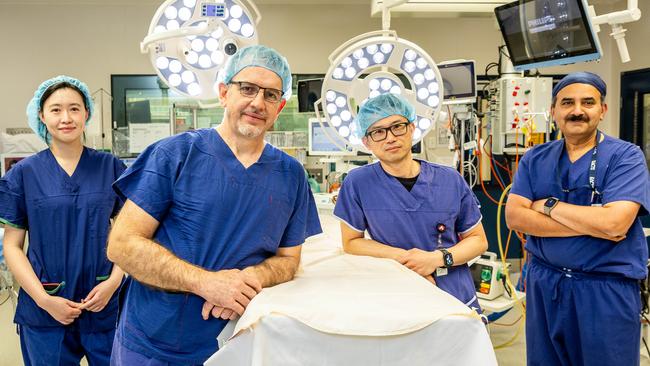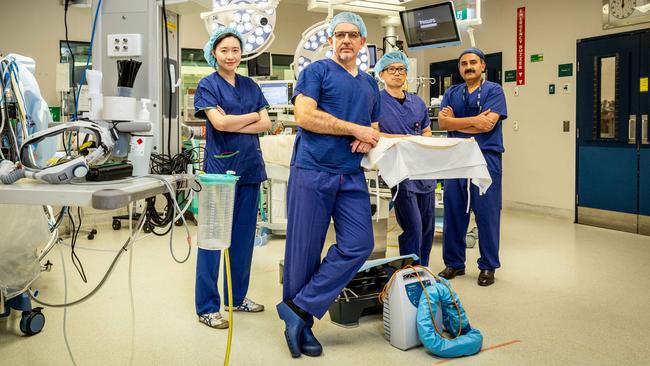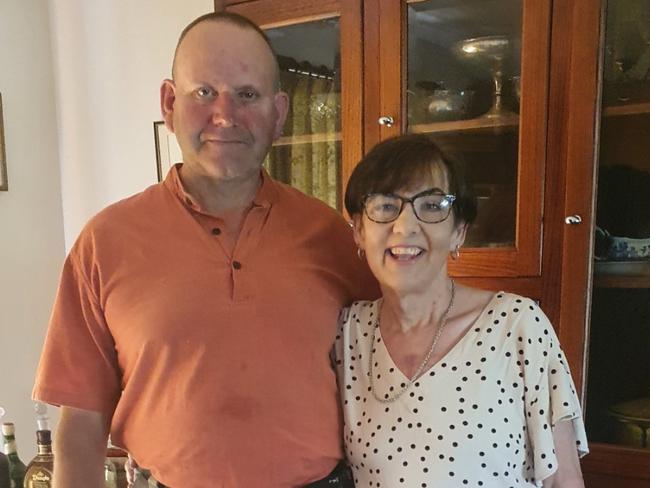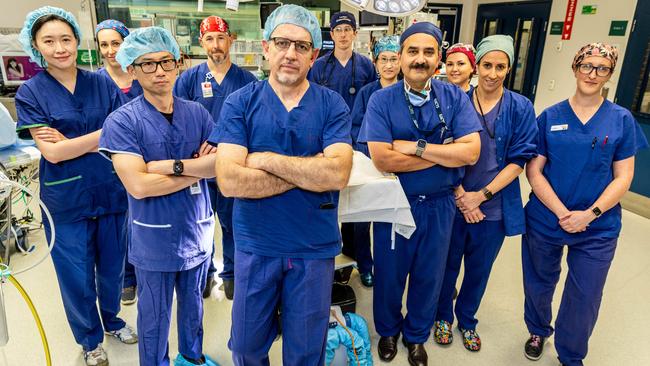The inside story of a medical miracle: World-first cancer surgery saves local mum
The only option for these cancer patients was a surgery with a less than 50 per cent success rate. This is the inside story of an Australian breakthrough that got the world talking.

Victoria
Don't miss out on the headlines from Victoria. Followed categories will be added to My News.
A world-first Melbourne cancer procedure has helped save dying Australians from having to undergo a last-resort surgery that up to half of patients do not survive.
The brainchild of a team at Austin Hospital, more than a dozen people from across the country have undergone the groundbreaking new procedure in Melbourne.
The key to safely removing a rare but deadly kidney cancer – which stretches from a patient’s liver and up into their heart – was to actually divide the traditional surgery into two operations.
The team’s leader, Austin hospital surgeon Marcos Perini said the first operation focused on fixing the biggest emergency – liver failure – before closing the patient back up.
“Without any treatment, these patients will die in weeks,” Associate Professor Perini said.
He said the surgeons can go back in a week or two later to remove the rest of the tumour “in a much controlled environment”.
Urological surgeon Dixon Woon likened it to dividing a marathon into two parts for someone not ready for 42km.

Dr Woon said – prior to the new technique – pre-surgery patient conversations were difficult, but now he can say mortality rates have dropped from between 30 and 50, to 10 per cent.
“I’d pretty much tell them to prepare to quite likely to die in the operation,” Dr Woon said.
“Now … it’s a much more bright future,” he said.
It was then-Ballarat nurse Fiona Williams that kick started this brighter future, rushed to Austin Hospital in October 2021, just a few weeks after a kidney cancer diagnosis.
Prof Perini said she was so sick he did not think she would survive surgery to remove the tumour from kidney, liver and heart, but they could not ignore her failing liver either.
“I was concerned … you work your whole life and then at some point, you have to make a call and change the way it was done. Because her liver was falling apart we are now going to the two stages approach,” he said.

Cardiac surgeon Siven Seevanayagam said their second idea – to “close off the vein below the liver” – prevented “the tumour coming back into the heart” in between operations.
“We had nothing to lose,” Associate Professor Seevanayagam said.
“So I decided to close it … and then everything changed.
“The liver improved right in front of our eyes.”
Prof Perini said there had been a lot of unknowns, but – once successful – they realised they could help more patients.
“I was not sleeping well for the first few days until her liver function got better and she recovered,” he said.
The operation involved up to 15 staff, including three to four surgeons, in the theatre at once.
When asked the secret to their success – their new technique has been shared with colleagues internationally and won an award from the country’s top urological body – the trio mention one factor again and again: team work.
Prof Perini said it was the collaboration at the Austin, the combination of surgeons from across multiple specialties bringing their expertise together and trusting each other’s skills, that was key. Dr Woon said it was not a “one-man flight” but one with “many pilots”.

Mrs Williams, now 57, could not be more grateful.
The Victorian mum said she has been undergoing cancer treatment – metastases were discovered six months ago – but the surgical site was cancer free.
“This is bonus time,” she said.
“I was so close to death and I’m still here, I’m still enjoying my family and life.
“I’m just so grateful that I’ve been given this chance and I wouldn’t have had it without that team.
She said Victorians should be so proud of the Austin and the team that came together to save her against the odds.
“How lucky are we? That Marcos is in Australia,” she said.
“I was dying. They saved my life”
Originally published as The inside story of a medical miracle: World-first cancer surgery saves local mum


